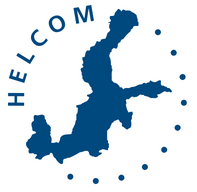Nutrient bookeeping at farm level is explored in a HELCOM workshop finishing today in Oldenburg, Germany. Nutrient bookkeeping, a key HELCOM issue particularly after the 2013 Ministerial , stands for planning and accounting input and output of nutrients in agricultural production, thus, for instance, keeping track of effectiveness of fertilizer use. The status of introducing nutrient bookkeeping in all the Baltic Sea countries are presented in the workshop by scientists, environmental and agricultural administrations and interest organizations.Nutrient
bookkeeping has strong potential for minimal nutrient waste as well as reducing
the harm for the Baltic marine environment. Photo: Helena Rosenlew.The participants have been sharing the experiences so far from different Baltic Sea countries, which in turn will help to shape necessary future activities. This includes potential development of policy and possibly other instruments on nutrient bookkeeping. The environmental condition of the Baltic Sea is widely affected by the over supply of nutrients causing eutrophication, algal blooms and changing conditions for the marine species. Agriculture is a major source of nutrient input to the sea and therefore sustainable practices are the key to minimizing nutrient losses. Nutrient bookkeeping has strong potential for minimal nutrient waste as well as reducing the harm for the Baltic marine environment. he HELCOM workshop is organized by the Chamber of Agriculture Lower Saxony and the Federal Environmental Agency in Germany and will be chaired by Mr. Dietrich Schulz, Federal Environment Agency in Germany, and Ms. Anette Pedersen, Danish Ministry of Environment. The work will continue in 28-29 May, when the HELCOM Group on Sustainable Agricultural Practices (Agri group) next meets.* * * Note for editors:The Baltic Marine Environment Protection Commission, usually referred to as HELCOM, is an intergovernmental organization of the nine Baltic Sea coastal countries and the European Union working to protect the marine environment of the Baltic Sea from all sources of pollution and to ensure safety of navigation in the region. Since 1974, HELCOM has been the governing body of the ‘Convention on the Protection of the Marine Environment of the Baltic Sea Area’, more commonly known as the Helsinki Convention. The HELCOM Group on Sustainable Agricultural Practices (Agri) deals with agriculture in relation to the implementation of the ecosystem-based approach and involves representatives from agriculture and environment authorities of the Baltic Sea countries, as well as EU and HELCOM Observers. The group provides a platform for agri-environmental policy measures and instruments and joint discussion on the Baltic agriculture in the context of the protection of the marine environment, in order to address nutrient inputs and emissions from agriculture. * * *For more information, please contact:Dmitry Frank-KamenetskyProfessional SecretaryHELCOMTel: +358 40 630 9933Skype: helcom68E-mail: dmitry.frank-kamenetsky(at)helcom.fi Johanna LaurilaInformation SecretaryHELCOMTel: +358 40 523 8988Skype: helcom70E-mail: johanna.laurila(at)helcom.fi
Nutrient bookeeping at farm level is explored in a HELCOM workshop finishing today in Oldenburg, Germany, to support nutrient efficient farming and to minimize the environmental impact on the Baltic Sea.
